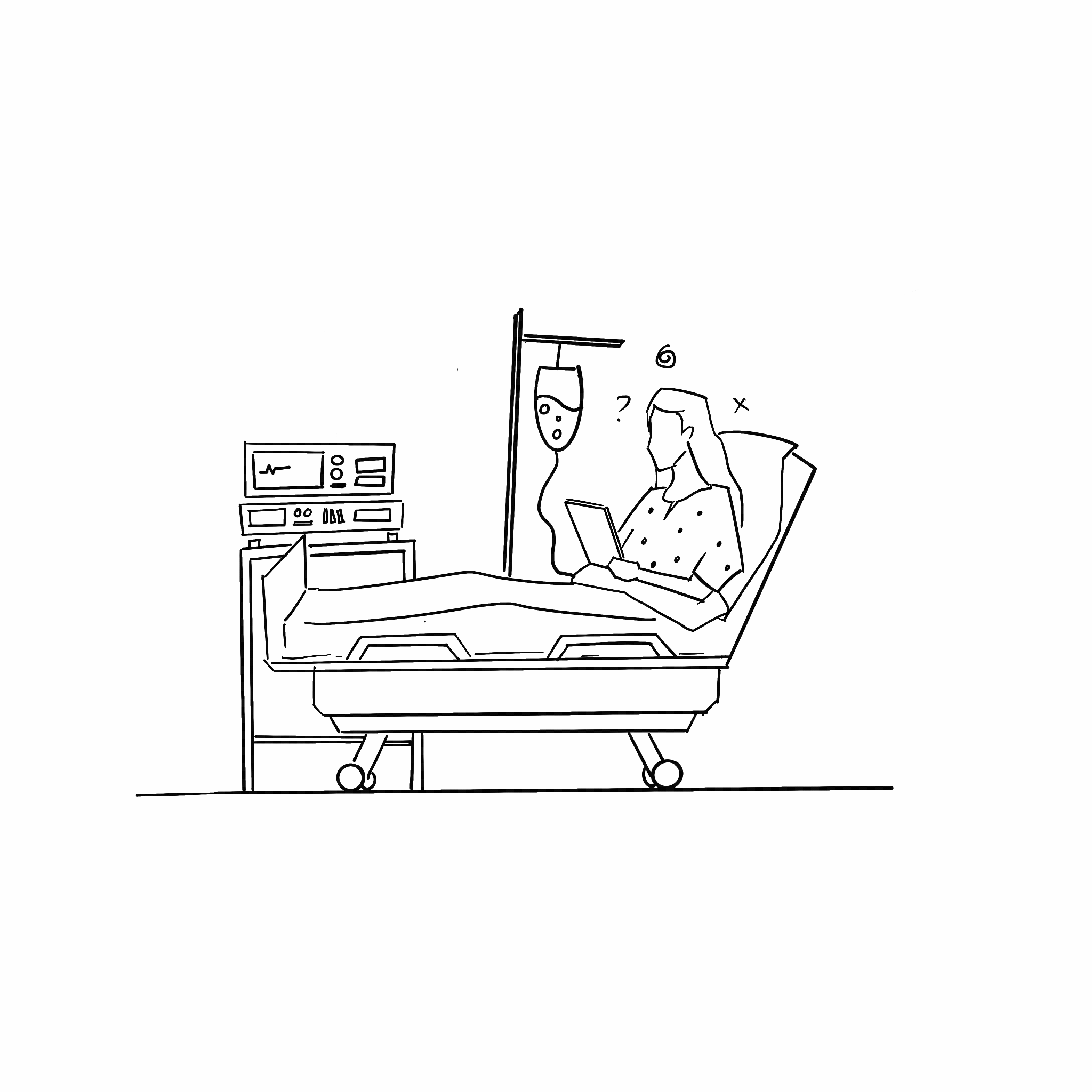Designing a communication strategy to implement acute hospital care within home setting.
Collaborating with the University of Chicago Health Innovation Centre to empower individuals on Chicago's South Side with the information needed to make informed decisions about the Hospital at Home program.

Background
At the time of assessment, University of Chicago Medicine operated at 90% capacity, posing high operational load raises critical concerns. This is especially critical considering UChicago's role as the sole Level 1 trauma center on the South Side of Chicago.
In preparation for the pilot launch, UCMC aims to equip patients and caregivers with timely and relevant information to ensure their successful participation in the program.
My Role
Communication Designer
Project info
5 months (2022)
Chicago, IL (on-site)
My contributions
Design Research, Field Visits, Analysis & Synthesis,
Visual Design, Illustrations
Challenge
How might we empower both patients and caregivers with the knowledge needed to make informed decisions regarding the Hospital at Home program?

Outcome
We created a set of communication documents


Site Visits and desk research for understanding the context
Approach




Site Visits and desk research for understanding the context
Research Highlights
The University of Chicago medical facilities' service experience was examined using a multi-method approach, including a review of previous primary research, analysis of patient education materials, and site visits. Insights from summer research on patient experiences informed the identification of communication prototypes through a service blueprint review, highlighting pain points and opportunities.

Service model and intervention touch-points developed with research.
To gain a comprehensive understanding of the entire service experience, we conducted various activities such as synthesizing primary research, performing secondary research on patient education materials and evaluation tools.

Insights Gathered
During the preparation and transfer phase in the service blueprint, when patients are getting ready to move to their homes, the transition can become confusing due to challenges in communication and coordination.


As Hospital at Home staff play a vital role in assisting patients during their transition, offering support and essential tools like medication guidance and remote technology practice, my team concentrated on aiding patients and caregivers in effectively utilizing technology throughout the program. Our focus was particularly on integrating health monitoring systems into their care regimen.
Patient Journey

Prototype Development
We leveraged these insights to create prototypes aimed at assisting patients and caregivers in utilizing technology effectively within the program, particularly in the context of health monitoring systems. These prototypes are designed for use by nurses and caregivers, especially during patient discussions.





Process images of prototype development
Prototypes received feedback from hospital staff involved in pilot planning, a patient panel, and Hospital-at-Home nurses.
-
Patients suggested troubleshooting guidance, device highlighting, and information on the support team.
-
Nurses and caregivers wanted additional content explaining device significance, a system diagram, and simplified manufacturer instructions.
-
The health literacy team appreciated the simplified instructions and endorsed the term "Hospital at Home health monitoring kit."

Second stage iteration after feedback.
A set of communication materials designed to assist patients and caregivers from initial program enrollment to the end of home-based care.
We incorporated patient and community guidance into a comprehensive set of educational materials for both patients and caregivers. This document will provide patients and caregivers with an overview and demonstration of the health monitoring kit, and its contents at bedside.


Diagram showing how
the devices connect.

Overview of
the device.
Illustration of the device and parts.
Illustration of the device and parts.

Guidance to use
the device.
Testing communication materials with UCM staff and patients




Testing communication materials with UCM staff and patients

Impact
Pilot officially launched its pilot in February 2023.
-
The first patient did so well in the program that they were discharged early! Rather than being bed-bound in the hospital, the patient was reported sitting in his favorite chair, eating the provided meals and moving around his home during virtual visits with the doctor. They raved about this option for his care.
-
Using the tech guide, the patient was able to submit an extra round of vital signs on Wednesday night.
-
The newly-appointed Chief Quality Officer has since requested a copy of the service blueprint for this program. He wants UCMC’s operations team to adopt this service.
It’s an impressive body of work, and it feels so good to see it all laid bare on gorgeous tables. I’m also grateful for all of your collaboration over the previous months. This was truly a monumental undertaking, and many other groups would have faltered at the task. You all shined, and everyone’s contributions are evident.
- Tanner Woodford, Founder and Executive Director, Design Museum of Chicago
